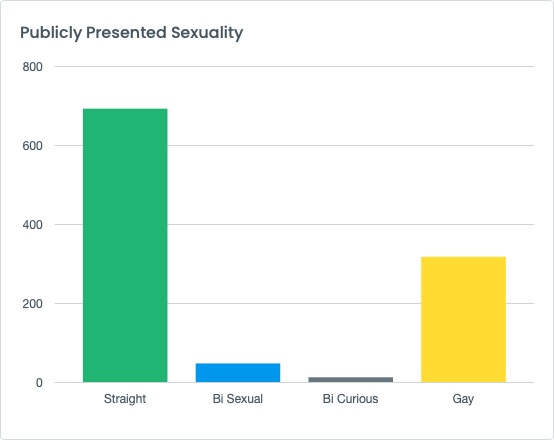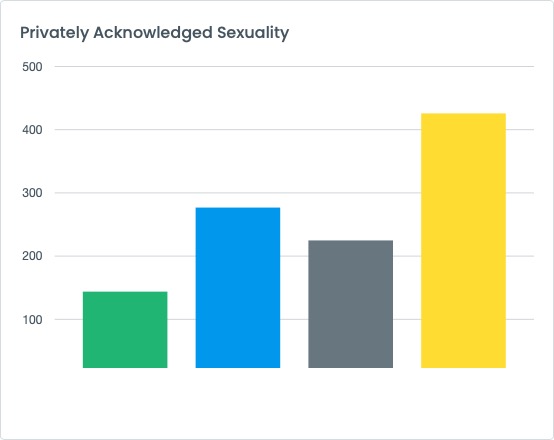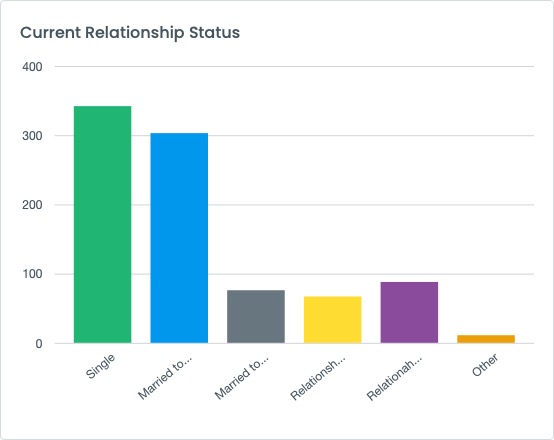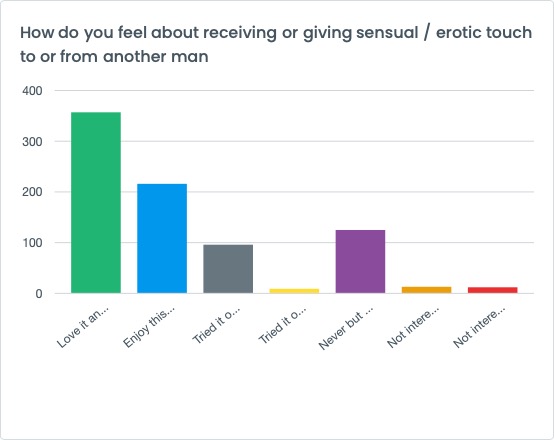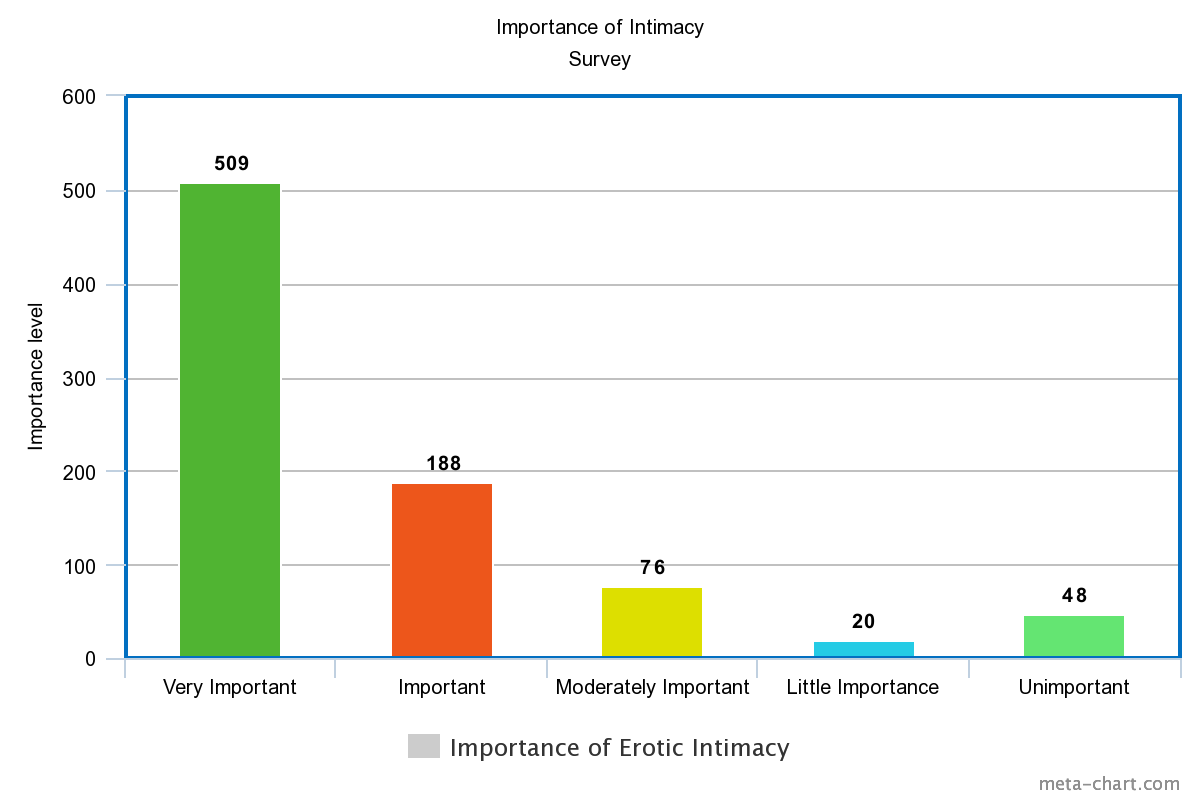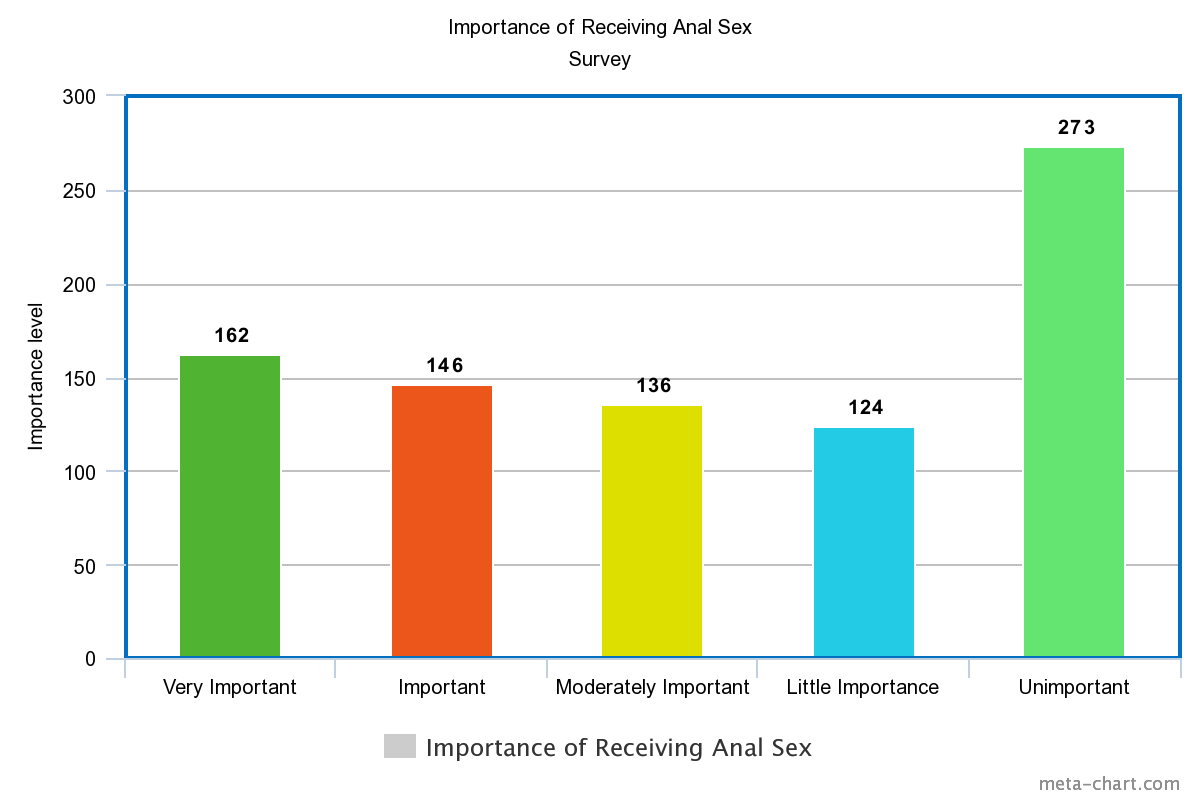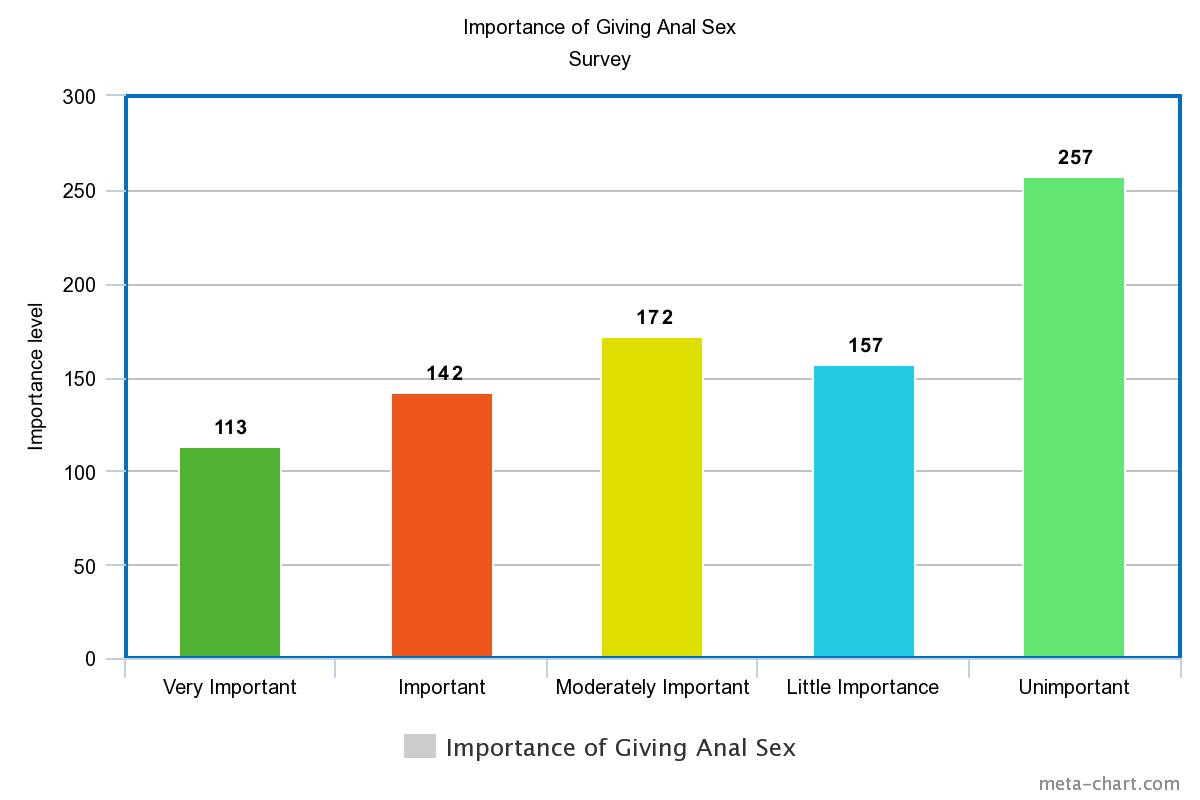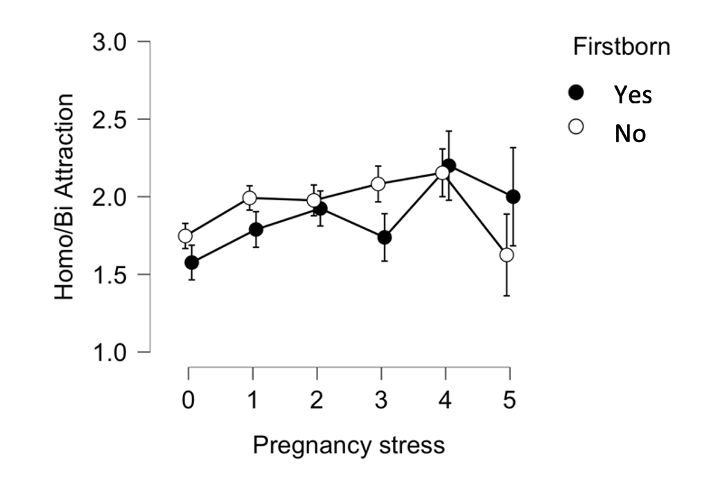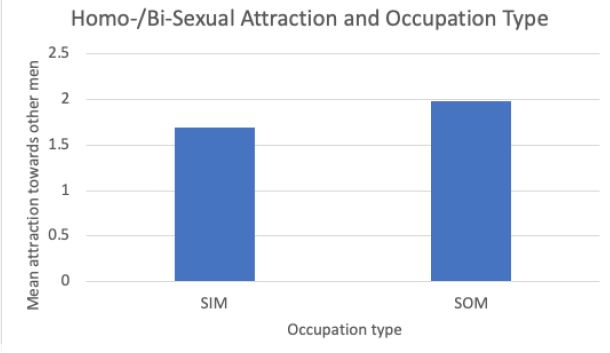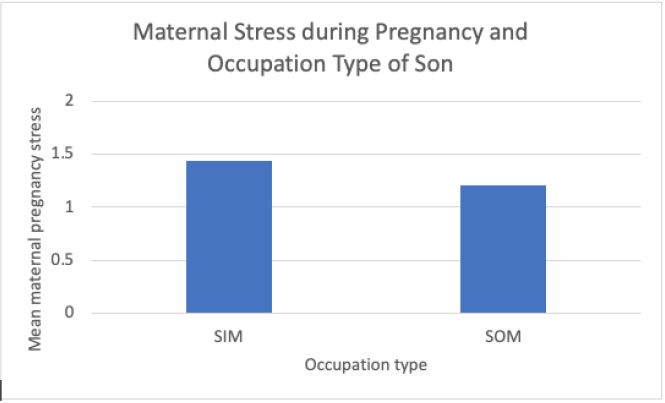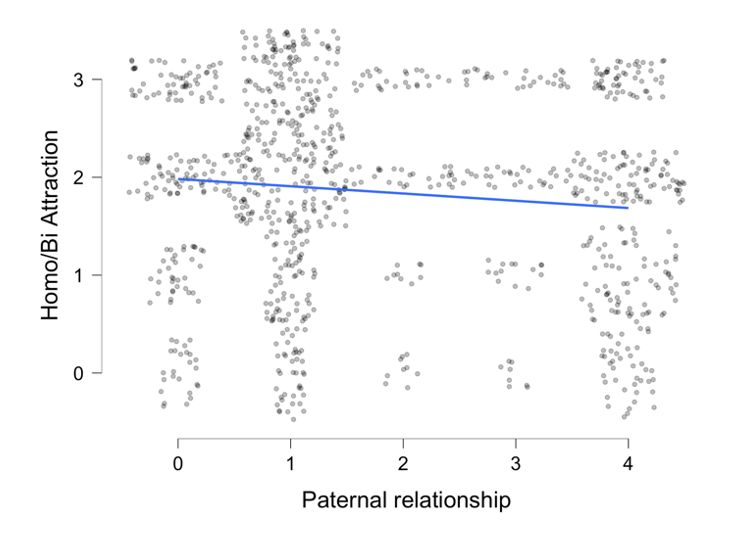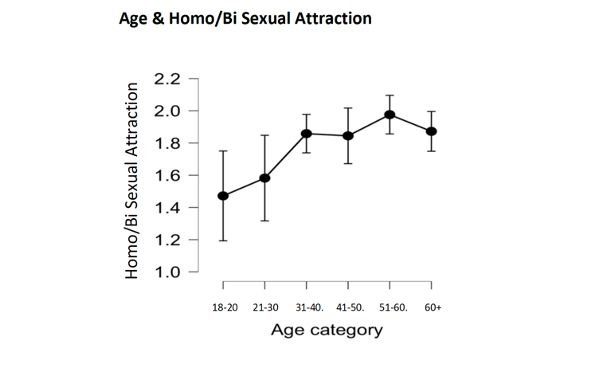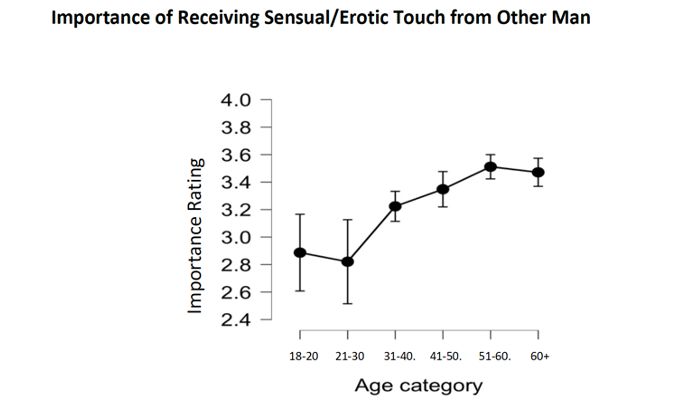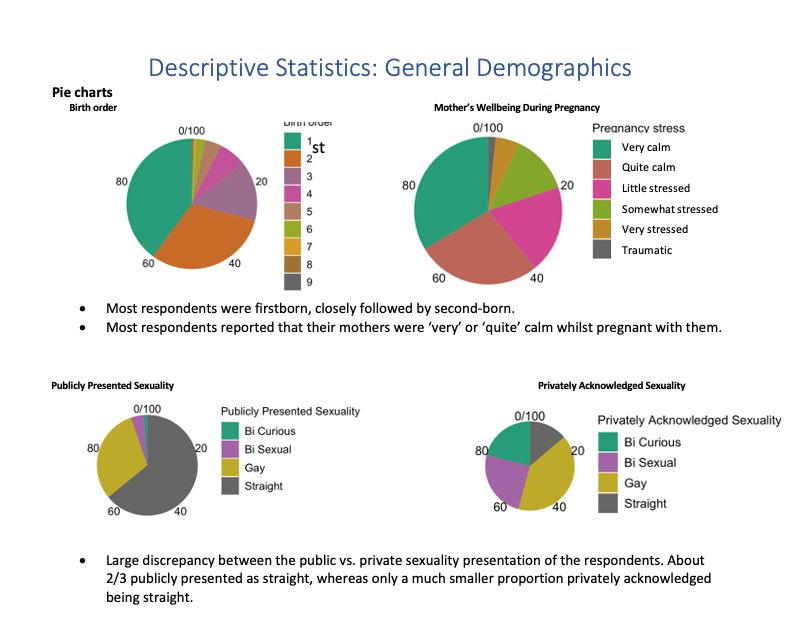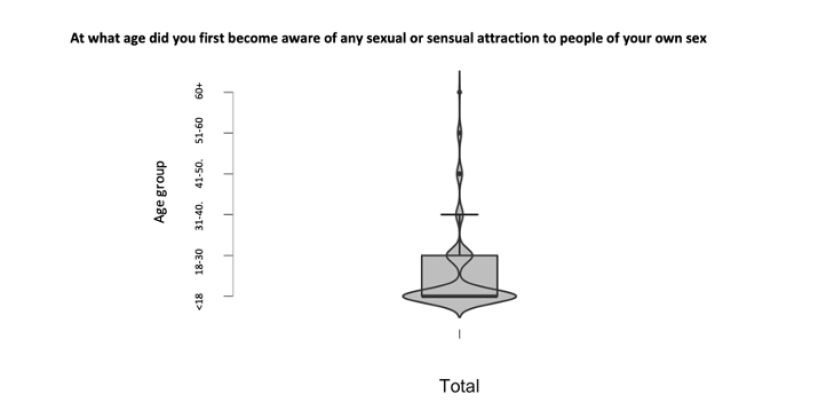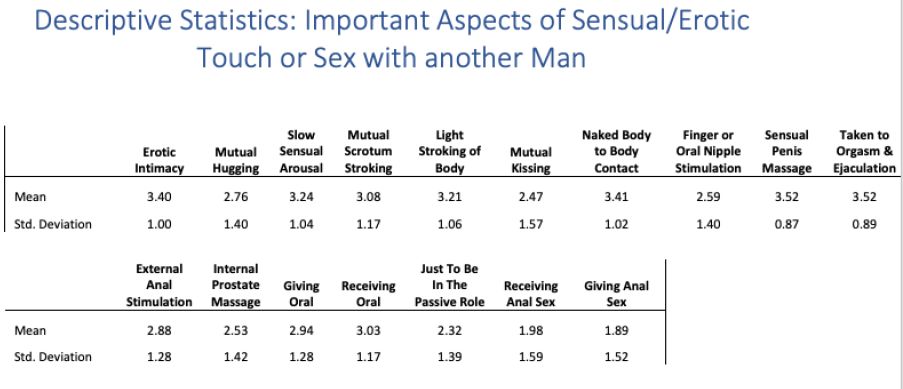Why Do Some Men Like Men
&
The Theory of 5 Influences
Introduction
For the last two centuries, if a man experienced any form of male-to-male erotic intimacy, society traditionally labelled him no longer heterosexual; he became a homosexual and, in the UK until 1967, was a criminal. In the last 60 years, attitudes to sexuality have become more enlightened. Still, even in 2023, in many social circles, if a man announces himself as bisexual, bicurious, or even heteroflexible, many people still see this as just a subtle camouflage that he is gay.
Over the past two decades, the polarised view of sexuality has been challenged. Now, many experts recognize that defining a person’s sexuality in such a binary manner is wrong. Still, the often mooted explanation of why a man may be sexually attracted to another man is that it is either a personal choice or is genetically pre-determined or a combination of both.
In a recent study taken in 2019 by it was concluded that sexuality cannot be pinned down by biology, psychology or life experiences, this study and others show, because all these factors decide human sexual attraction. The study shows that genes play a small and limited role in determining sexuality. Genetic heritability — all of the information stored in our genes and passed between generations — can only explain 8 to 25 per cent of why people have same-sex relations, based on the study’s results.
However, as comprehensive as the study was, it had flaws in that it did not consider the impact of historical and social context on the data sets and parameters.
Informed by his 18 years of experience working with thousands of men who have expressed broader sexuality, Colin Richards, Sex Engineer and Relationship Therapist, has concluded that same-gender attraction has as much to do with the emotional, psychological and anthropological as it does genetic and sexual.
In 2014, Colin started his Why Some Men Like Men survey. From this, and to support the male clients who come to him to understand their sexuality better, he has developed his counselling tool, The Theory of Five Influences. Colin uses this theory to show how an individual’s sexuality is unique and that many factors influence whom we are attracted to.
Suppose you have questioned your subconscious sexual desires or recognised that you are attracted to same-sex intimacy but do not self-identify as homosexual. In that case, The Theory of 5 Influences allows you to consider your feelings in a broader perspective.
The Theory of 5 Influences supports the idea that a person’s sexuality is unique but a combination of factors that includes genetics, environment, psychology, and natural life processes that are in a perpetual state of change throughout a person’s life.
Background to the creation of The Theory of Five Influences by Colin Richards
As a sex engineer and sensual masseur, I have given appointments to men and women of all ages, sexualities and cultural backgrounds. As well as general sexual performance advice, I support many men and women who feel or desire to explore their sexuality. I estimate of the 5,000 male clients and 1,000 female clients I have seen, many tell me that although they may present themselves publicly as heterosexual, they privately recognise they have the desire to experience sensual or sexual intimacy with another person of the same sex. Many come to appreciate and even welcome their polysexuality. Still, for some, it can prove a challenging time, and so to lessen the confusion and ease their minds so they can live life content with who they are, I take the time to explain why I believe they feel the way they do.
The Theory of 5 Influences is my understanding of how a person’s sexual attraction could be made up.
Why I focus on male sexuality
In this article, I focus on male same-sex attraction rather than female same-sex attraction. The theory applies to both genders, but for ease of explanation, I have chosen to focus on male sexuality. I have worked with more men than women since, even in the more enlightened societies of the West, if a man is seen to have intimate or sexual contact with another man, he is immediately labelled as gay. In contrast, a woman can explore her sexuality without being labelled as a lesbian.
In brief
I believe that the desire for a man to experience male-to-male sex is mostly an unconscious desire to bond and emotionally connect with another man and not just for sexual pleasure. To prove this, I set up two surveys asking various questions to establish this broader desire.
The surveys
I began an initial sexuality survey in 2006. When clients registered on my website, rather than just asking how they defined their sexuality, I asked this question in two parts. Firstly to state both their publicly acknowledged sexuality (the sexuality they openly admit to) and then asked to identify their privately acknowledged sexuality (the sexuality they feel they really are but can’t be public about). This produced some surprising results, prompting me to set up a more comprehensive survey asking more defined questions about relationships with primary carers and what was important to them in their sexual experience, profession, and personal traits and characteristics. This second survey began in 2012 and is still running. To date, it has been completed by 1068 men. The graphs shown below are from the data collected up to September 2023.
If you would like to take the survey and add your data to the study, please click on the link below.
Survey Results
1. Publicly presented sexuality
(what they tell family, friends and colleagues)
Total Surveyed 1068
- Straight – 692 (64%)
- Gay – 317 (29%)
- Bi Sexual – 47 (4%)
- Bi Curious – 12 (1%)
2. Privately acknowledged sexuality
(what they really feel about themselves)
Total surveyed 1068
- Straight – 143 (13%)
- Gay – 425 (39%)
- Bi Sexual – 276 (25%)
- Bi Curious – 224 (20%)
a) Breakdown of change of the 692 men who publicly presented as Straight compared to their actual privately acknowledged sexuality
- Remained Straight – 110 (- 79% decrease)
- Straight to Gay + 108 (+ 34% increase)
- Straight to Bi Sexual + 229 (+485% increase)
- Straight to Bi Curious + 212 (+1766 % increase)
This statistic shows that of 692 men surveyed who identify publicly as Straight 549 (79%) were withholding their true sexuality.
3) Their current relationship status
- Single – 342
- Married to female – 303
- Married to male – 76
- In relationships with females – 67
- In relationships with males – 88
- Other – 11
a) Men in female relationships
Of 370 men who declared that they are currently married or partnered with a female partner 227 (62%) are privately defining themselves as bisexual, bi-curious or gay and this may be with or without their female partner’s knowledge.
4. Level of desire for male-to-male sensual touch
(How do men feel about receiving or giving sensual/erotic touch to another male).
- Love it and enjoy this often – 356
- Enjoy this occasionally – 215
- Tried it once and want to try it again – 95
- Tried it once and not again – 8
- Never but curious to try – 124
- Not interested in having a sensual experience – 12
- Not interested because I don’t want to be touched or touch another man – 11
Of the 144 men who defined themselves as straight both publicly and privately, 86% (123 men) admit that they have either received sensual/erotic touch from another man and enjoyed it, or have considered it. Only 14% said they were not interested at all
(Colin’s comment – this shows that some men who classify themselves as totally straight both publicly and privately can still be attracted to share intimate arousal with another man without it challenging their identity.)
5. Aspects of male-to-male sexual behaviour
The survey also asked questions about what men felt was important to them when having a sensual or sexual interaction with another man.
a) Importance or erotic intimacy with another man
- Very Important – 509 (61%)
- Important – 188 (22%)
- Moderately Important – 76 (9%)
- Little Importance – 20 (2%)
- Unimportant – 48 95%)
6) Importance of receiving anal sex
Of 841 men surveyed 397 said it was either unimportant or of little importance to receive anal sex from another man. Given that 120 men defined as straight means that of the men that were defined as gay, bisexual or bicurious 277 said that receiving anal sex was not their thing.
7) Importance of giving anal sex
Of 841 men surveyed 414 said it was either unimportant or of little importance to receive anal sex from another man. Given that 120 men defined as straight means that of the men defined as gay, bisexual or bicurious 294 said that giving anal sex was not their thing.
The Theory of 5 Influences
This theory advances the premise that a person’s attraction to another person, whether male or female, is not fixed at birth but depends on five primary influences that can sway attraction from the opposite sex to the same sex or a combination of both. The theory of 5 influences also advances the hypothesis that attraction is a combination of sexual, psychological, and emotional, so it is quite possible for a person to be both heterosexual and homo-emotional simultaneously.
Whilst there is clear scientific evidence that our genetics do play a part in a person’s orientation in the same way that a particular personality trait or talent can be passed through the genes, it is what happens to us during birth and the following unfolding years right up to midlife that continually influences our sexual, sensual and emotional attractions to others.
Influence 1
Genetic predisposition and pre-birth situational and environmental influences.
Foetal brain development during pregnancy and the effect of a stressed/non-stressed pregnancy on the long-term characteristics of the male.
This first influence is based on the character attributes determined by being born from a stressed or unstressed pregnancy. It puts forward the theory that those children born from an unstressed pregnancy are more likely, but not necessarily, to become adults who develop either bisexual or homosexual attractions later in life.
Conversely, children born from stressed pregnancies are more likely but not necessarily to be adults who are more heterosexually focussed later in life. The tendency is for a firstborn child, being the mother’s first pregnancy display these more heterosexual traits. However, this influence should be seen as a starting point on a moving spectrum affected by any or all of the following four other influences.
Men from stressed pregnancies – SIMs (Self-interested males)
A recent study at Imperial College London shows that stress experienced by a woman during pregnancy may affect her unborn baby as early as 17 weeks after conception, potentially permanently affecting the brain and development. The five influences theory suggests that the more stressed the pregnancy, the more likely the child would be born with self-survival instincts. Nature’s method ensures the species’ survival in times of danger.
These characteristics are:
- a competitive nature
- self-centred
- less sense of empathy towards others
- a tendency to be aggressive/defensive
- non-intimate
- controlling personality
- strongly heterosexual.
These are all attributes that would be beneficial for survival, particularly in life-threatening times. The pregnant mother would be anxious if food was scarce or her security and safety were threatened. The developing child she is carrying would be programmed with characteristics that give her a better chance of survival. I call this the SIM effect (Self-Interested Male)
This SIM male will be naturally competitive with a tendency to fight for its survival. Being self-centred/introverted, he will be focused on his own needs. A lack of empathy towards others ensures he puts himself first and does not rely on others to support him. His tendency towards aggressive or defensive behaviour and to be hyper-aware and vigilant against threats and able to respond quickly and confidently ensures he can defend or protect himself. Being non-intimate removes the need to develop close relationships so he can continually seek new sexual partners. The more sex he has, the more chance of ensuring his genetic line. He will have a controlling personality since by controlling his environment, he maintains his security and safety. Being assertively heterosexual, he continually seeks opportunities to procreate with females again to secure his genes and maintain the species in times of threat.
The more stressed the pregnancy, the stronger these characteristics appear to be, and it seems that in modern times, these types of men will tend to follow specific careers as Barristers, Salespeople, Competitive Sportsmen, Politicians, the Military, Surgeons, Bankers, Entrepreneurs, Celebrity types. Not surprisingly, these are often the men that we hear about in the press who use sex workers, and it is their wives who often complain that their SIM husbands are egotistical, unfaithful and when it comes to sex assertive but lacking in foreplay skills and are more focussed their own pleasure than their female partners.
Men from a less stressed pregnancy – SOMs (socially open males)
A child born from a pregnancy that is less stressed appears to develop characteristics of a completely different nature. These characteristics appear designed to be inclusive of others rather than exclusive. Typically, these characteristics are:-
- empathetic
- good communicators
- sensitive
- other people focussed/extrovert,
- creative
- bisexual or polysexual
- need physical intimacy
- Attributes that are designed to bond with others and help build relationships and community
I call these types SOM’s (Socially Open Males)
In early man, when food was plenty and life secure, that was the time for building and expanding the community. Less focus on the species’ survival but more on the species’ growth. This meant the SIM males, although still necessary, the community also needed SOM males who could be creative with food collection, supportive of the group they belonged to, and be able to work as a team with other males to support the group. To communicate, be good organisers, and have a caring nature to maintain group harmony.
Careers these types of men tend to follow today are Accountants, Solicitors, Small Business Owners, Hospitality, Therapists, Teachers, Nurses, Theatre Actors, Academics, Consultants, IT Developers, and Designers. The Som personality types have skills for developing and supporting the broader community.
Of course, male biology is not polarized. All males will have their unique biology at birth, according to the foetal development of the mother’s disposition and biological chemistry during pregnancy, meaning that these innate characteristics should be seen as being on a spectrum placing every male anywhere from being a total SIM to a SOM or somewhere in between as most of us are.
Of the 1067 men surveyed and asked about the state of their mother’s well-being during her pregnancy with them 57% said that they were either quiet or very calm.
- 278 – very calm (26%)
- 224 – quite calm (21%)
- 158 – a little stressed (15%)
- 115 – somewhat stressed (11%)
- 36 – very stressed (3%)
- 230 – don’t know (22%)
Of those 502 that said their mothers pregnacies were quiet or very calm, 423 ( 84%) were men who later in life defined themselves privately as gay, bisexual or bicurious, supporting the fact that a calm pregnancy may psychologically program the child to have more empathetic, creative and community-focused characteristics.
Influence 2
Cultural – Our circumstances at birth to 10 years
We don’t have a choice about where we are born, who our biological parents are or what culture or belief system we are educated by. From the moment we are born, maybe even before, we are bombarded by unconscious messages from parents, siblings, teachers, friends and strangers on how we should behave so that we are accepted by the community we are born into and survive the challenging childhood time.
No matter if a male child is born with the self-focussed characteristics of the SIM or the empathetic nature of the SOM, the moment the child is born, his reptilian brain will react to the messages being given to him as to how best to behave to be sure to maintain food, shelter, and sustenance.
Suppose the child is born a natural SOM but grows up in an ultra-conservative, closed-minded society of strict morality around sex and is given clearly defined gender-type roles of how a male should behave. In that case, his SOM characteristics will become suppressed. For example, a male child who by the age of 6 is showing a natural talent for dance, theatre or art may be forced to deny these talents because the culture he is born into dictates that he should play football, climb trees, and learn to fight. Equally, a SIM might be born into a very liberal society and find that his flamboyant, artistic hippy parents live by a code that does not fit his competitive, less empathetic character.
Think of the fictional characters of Batman and Robin. Batman, or Bruce Wayne, was born an only child in the crime-ridden city of Gotham (probably stressed pregnancy) to Philanthropist parents, Dr Thomas and Martha Wayne, who, when he was eight years old, were murdered in the back streets of Gotham City to make young Bruce an orphan and the ultimate SIM (think image, attitude, ego etc). In contrast, Robin is more than likely a strong SOM (colourful, eager to please, sensitive, and always in the supporting role). Maybe if the story was different, Bruce might have become a city tycoon and Robin a fashion designer!
How this affects a man’s sexuality is that by adolescence, when a young man becomes aware of his sexuality, if he is drawn to same-sex intimacy or exploration, this will be suppressed so that he does not risk being rejected by his family and community. This is why, in the survey, we see many men who say they have lived a heterosexual life for many years but say that attraction to other males started before 18.
65% of men surveyed (546/838) said their attraction to other men started before 18. Of that, 469 (85%) are men who were still publicly defining themselves as straight at the time of the survey.
Influence 3
Paternal Relationship 0 -16 yrs
In parallel and often in conflict with the second influence, the third influence has to do with our relationships with our mothers and fathers or primary carers when we are young. I have noticed that most men seeking same-sex sensual intimacy later in life have experienced negative relationship dynamics with fathers or a primary male carer responsible for their welfare and security in childhood.
It appears that if the relationship between the primary male figure in the child’s early life is in some way emotionally fractured or absent, then there is a far greater tendency to seek masculine connection and approval from other men later in life. It could be that the father is often absent due to work or maybe has a divorce and consequently has little contact. Aggression from father to son, high expectations and pressure to perform, death, lack of interest, and addiction are all possible reasons the relationship between the son and father can become emotionally broken.
Why should this then manifest in an interest in other men later on in life? A smooth developmental journey for a child is extremely important if that child will grow into a self-confident, grounded adult. From birth to 2yrs we learn trust vs. mistrust, and from 2 to 3 years, autonomy vs. shame and doubt. 3 to 5 years initiative vs. guilt, 6 to 11 years industry vs. inferiority and then in our teen’s identity vs. inferiority. It is mostly from our parents that we learn the difference or become one or the other. It follows that if during the period between birth and 14 one of the main influencers on the child’s development, the father, is negative or absent and not replaced, then there will be a strong tendency for that child to feel the negative aspects about themselves. To mitigate this, as they get older, this undeveloped self will seek out the approval it missed and still yearns for from other male figures. This need or attraction is emotional rather than sexual, but often it will manifest in physical contact with other males. Hugging, holding, and stroking are all basic methods with which early humans developed a trusting relationship with one another, and the more intimate and sensitive area of the body touched, the more trusting the relations will be.
To check this 3rd influence I asked men to select the most accurate description of the relationship between themselves and their fathers or primary male carers before the age of 12. Out of 1068 answers, 756 (71%) report that they had a relationship with their fathers and felt some level of emotional distance, absence or aggression. Only 266 (24%) said they had a close supportive relationship, and 46 (4%) said he was OK.
Influence 4
Maternal Relationship 0-16 yrs
The 4th influence is the state of the relationship between the male child and his mother or primary female carer from birth to around 16. If the relationship with the father or primary male career has been fractured, the relationship with the mother will often become closer. A child needs an environment of sustenance and safety to grow. Without a positive relationship with a male figure, they often rely more on the female carer for their security.
This will be the mother but can also be relationships with a grandmother or female siblings. It often follows that if the father is absent or aggressive, the mother or female carers may be the sole provider and have a tough job maintaining the family’s welfare. The effect of this extra demand can result in the mother feeling additional stress and having the tendency to be anxious. Long working hours or being absent for periods will cause the male child to be very aware of the need to support his mother and behave in a manner that does not increase her stress. He will learn to micromanage her moods and then adjust his behaviour accordingly. Helping around the home, being a good boy, and avoiding getting in the way are all familiar behaviour adaptations of a male child brought up in these circumstances.
Later in life, when an adult, he will, through habit unconsciously, continue to monitor his female partner’s moods. He will be more susceptible to female criticism. During adolescence and into his 20s, a man, if he has begun to have sexual experiences with women, will unlikely be much aware of any effect on his performance. Still, as he gets older and his body is less fit, he may experience early erectile issues.
Loss of erection, inability to orgasm or spontaneous ejaculation are all classic issues for men who feel anxiety during sex. If this anxiety becomes regular and frequently occurs when he is a female, he may begin to wonder about his sexuality.
To compound this feeling of ambiguity, if he is also becoming aware of his need to bond physically with another male, this can cause him to question his true sexuality. Male clients who are in heterosexual relationships but have come to me for sensual massage, have told me that although they seek sex with women, they often experience issues with sexual performance, but when with another man, they have felt relaxed and at ease.
They say they have felt more turned on, with erections maintained and a deeper sense of pleasure experienced. This will reaffirm their belief that they must be more attracted to men, maybe even be gay, when in fact, it is a combination of influences of the need to feel masculine approval and an over-sensitive reaction to perceived female judgment.
The survey asked: select the most accurate description of your relationship with your mother or primary female carer before age 12. Of 841 answers, 534 (63%) said it was close, caring and supportive.
Of the 534 men who stated that their relationship with their mother was close, caring and supportive, 461 (86 %) privately defined themselves as either gay (228), bisexual (117) or bi-curious (116) leaving only 13% (70) defining as straight.
Influence 5
Life Cycle Bonding – Competitive Procreators to Co-Operative Provider
The time frame for the evolution of the genus Homo out of the chimpanzee–human last common ancestor is roughly 10 to 2 million years ago. Our species of Homo sapiens has been in existence for about 1.8 million years. It is estimated that we have been communicating with a verbal language for about 200,000 years, so it is not unreasonable to assume that before verbal language became our primary form of communication, visual and physical language must have been the method for at least a couple of million years.
We only have to watch our domestic pets or farm animals to witness how nonverbal languages work. Two dogs meet, and tails wag, and bottoms get sniffed. Two horses meet, and they snuffle one another’s necks; a small dog meets a large dog and the former rolls over, exposing its stomach and genitals. As animals communicate visually and physically, so do we humans. Maybe we are unaware, but each time we share, we also use physical signs to support our message—gestures, eye contact and touch. A hand rests on a shoulder to show support; a palm touches a cheek to show affection; we hug, kiss, and hold hands.
From an evolutionary perspective, this makes sense. If it is accepted that the primary strategy of the male is to secure his genetic future by having sexual intercourse with as many females as possible, quantity is above quality.
On the other hand, the sexual strategy of the female is to seek quantity and quality, so she will be more selective about which males she has sex with since she needs to ensure that her biology has a choice of genetic matches to choose from. This strategy provides both a good biological match and also since the various mals she has had sexual intercourse with actually have no idea which of them is the biological father, she has created multiple fathers. When the baby is born, not all the males will take an interest in both her and the offspring’s welfare since there is a chance that they are the biological father.
This strategy highlights the two fundamental strategies of the male and female that underpins both gender’s behaviour. Males seek approval ( they need to be chosen by the female to have sex), and female seek desire (the more desirable she makes herself, the more males she attracts to have sex with)
For the female, the motivation to be desirable continues until menopause, and she can be sexually productive for anything up to her mid-50s. The male, on the other hand, starts his menopause at around twenty-one. It begins very slowly, and most men are unaware of changes in their libido. But once they pass their mid-twenties, most men will experience a gradual decline in virility. Spontaneous erections experienced when a teenager no longer happen quite so regularly. By the age of 30, usually getting aroused requires either visual or physical stimulation, and by 40, maintaining an erection can become unpredictable. I am often asked (particularly by older women) why women hit their second sexual peek in their 40s, yet men seem to be on the sexual decline by this age. This is because nature wants females to procreate with younger males/ Younger males mostly have less chance of carrying a virus they are fit and can protect. At a younger age, when they are fit and sexually receptive, they attract similar-aged males, but when females become more mature, it is even more necessary for them to mate with a young, healthy male. The Cougar woman is not a fantasy.
So if nature’s processes imply that older men are no longer required to be the primary procreators, having to leave this role to the younger males, why are they not dispensed with? Why does nature keep older males alive? Why not kill them off? Because their roles change. Older males are experienced stronger and, therefore, can serve the community by being protectors and providers rather than front-line procreators.
Human child rearing is not particularly efficient in securing genetic lineage. Most human females only have one child at a time. Pregnancy is nine months, and during this time, the mother is vulnerable and needs support and security to ensure a safe birth. This vulnerability continues after delivery for at least another three years while she is rearing the child, in which time she may have had two more offspring. So, the older males would be tasked with caring for and protecting the group’s offspring. To achieve this, they must work together to hunt, fight off predators and be creative in making the home secure and safe. To work together like this, these older males need to alter their relationship with other older males from being competitive procreators to becoming cooperative providers.
Today, men build relationships primarily by talking, meeting in the pub, and sharing stories about exploits or sports teams. But before humans developed speech 200,000 years ago, males would have achieved this relationship change with a visual or physical language. A language of touch. To touch one another was a sign of acceptance, to touch one another in vulnerable areas of the body, the genitals and, more poignantly, the testicles; mutual touching of these spots showed a sign of complete trust. Sharing one’s testicles meant the male was metaphorically trusting the other male with his genetic future, and it also felt good. As the testicles are stroked, signals are sent to the limbic system of the brain that immediately causes large amounts of the ‘ love hormone’ Oxytocin to be released. This relaxes the male and encourages them to bond with one another.
This evolutionary process to shift the male-to-male relationships from competitive procreator to cooperative provider is still happening today. We see it in everyday life when, as they get older, men tend to join male-orientated communities such as sports clubs and the gym and now, with dating apps like Grindr, men seek out other men for sexual pleasure; they seek out close, intimate male relationships and reciprocal genital touch and arousal is very much a part of this evolutionary male to male bonding process.
Imagine two males who once were vying for females meet on the planes of Africa 250,0000 years ago. Instinct tells them they need to go hunt together and protect one another. Initially, they touch and poke one another, but gradually, the touching becomes more sensual, causing oxytocin to be released from the pituitary gland. The oxytocin immediately relaxes and turns them on, and soon, the touching becomes sexually pleasurable, with the testicles being the most sensitive and vulnerable part of the body that another can touch. This is classic behaviour of the Bonobo chimpanzee that uses this same strategy to maintain social calm in their troop. Bonobos and Humans are genetically 97% similar.
Is it too far-fetched to consider that once migration out of Africa happened and humans lived in colder climates where garments were needed, the male-to-the-male ceremony of touching one another’s testicles evolved into a symbol of touching hands….. the handshake?
The word Testify comes from the Latin word for Testicle – Read More
From Colin
If you have found this article of interest or helpful and you are willing to share your personal story about your sexuality. If you would like to help me change the way men understand their sexuality and how society sees male sexuality in general, then please take the survey.
Statistical analysis of the survey
Male Sexuality Survey (2014-2021):
Summary of Main Results
Influence 1
Genetic predisposition and pre-birth environment
- Men’s attraction to other men is significantly correlated with the amount of stress experienced by their mothers’ during pregnancy. The better well-being experienced by the mother during pregnancy, the more likely the son later experiences attraction to other men in adulthood. The more stress the mother experienced during pregnancy, the more likely her son would grow up to be purely heterosexual.
- Birth order significantly contributes to stress in pregnancy: Men who are firstborn children are both significantly more likely to have been born from a more stressful pregnancy and more likely to be heterosexual as they become adults. Non-firstborn men tend to have been born from a calmer pregnancy, and they are more likely to be homosexual, bisexual, or bicurious.
- Higher levels of pregnancy stress significantly correlate with men having greater empathy, greater enjoyment of dancing, and a larger number of biological children. However, none of the other SIM/SOM traits showed statistically significant correlations with pregnancy stress.
- Being attracted to other men is significantly related to pursuing an SOM-type career, and being heterosexual is significantly related to pursuing an SIM-type career
- Higher stress during maternal pregnancy is also significantly related to pursuing an SIM-type career, and calmer pregnancies are significantly related to pursuing an SOM-type career
Influence 2
Cultural circumstances from birth to age 10
- No correlation between men’s attraction to other men and the social acceptability of LGBTQ of their birth country(2021 rankings compiled by UCLA School of Law, p.33-34 attached)
- No correlation between the age when men became first aware of their same-sex attraction and the social acceptability of LGBTQ in their birth countries
Influence 3
Paternal Relationship
- Significant correlation between attraction to other men and the quality of relationship with one’s father (or male guardian). The poorer the men’s paternal relationship during childhood, the more likely they will experience attraction to other men. If a man has had a close paternal relationship, they are more likely to be heterosexual.
Influence 4
Maternal Relationship
- No correlation between attraction to other men and the quality of relationship with one’s mother (or female guardian).
- Paternal and maternal relationships are significantly correlated. Men who have a good relationship with their fathers tend to have a good relationship with their mothers. Men who describe the quality of their paternal relationship as poor also tend to experience a poor relationship with their mothers.
Influence 5
Life Cycle Bonding
- Age is significantly correlated to experiencing attraction towards other men. The older a man gets, the more likely he will be interested in other men.
- Age is also significantly correlated to the importance which men place on receiving sensual/erotic touch from other men. The older a man gets, the more he tends to appreciate it when another man touches him sensually or erotically. Younger men tend to dislike or find less importance in receiving these kinds of touch from other men.
- Birth order
- Mother’s Wellbeing During Pregnancy
- The vast majority of respondents first became aware of their attraction towards other men under the age of 18, followed by a substantial portion until in their early 40s.
Take The Survey – Click Here
To send your personal story, email colin at – colin@intimacymatters.co.uk
If you found this article interesting and feel it would be good for others to read it please SHARE on Facebook, Twitter and Linked In by clicking the respective icon below.




